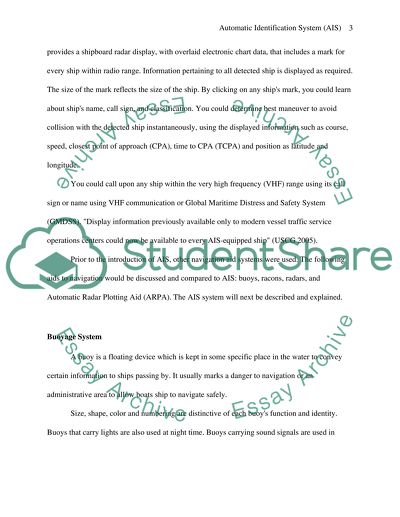Cite this document
(“Automatic identification systems (AIS) Essay Example | Topics and Well Written Essays - 2500 words”, n.d.)
Automatic identification systems (AIS) Essay Example | Topics and Well Written Essays - 2500 words. Retrieved from https://studentshare.org/miscellaneous/1513390-automatic-identification-systems-ais
Automatic identification systems (AIS) Essay Example | Topics and Well Written Essays - 2500 words. Retrieved from https://studentshare.org/miscellaneous/1513390-automatic-identification-systems-ais
(Automatic Identification Systems (AIS) Essay Example | Topics and Well Written Essays - 2500 Words)
Automatic Identification Systems (AIS) Essay Example | Topics and Well Written Essays - 2500 Words. https://studentshare.org/miscellaneous/1513390-automatic-identification-systems-ais.
Automatic Identification Systems (AIS) Essay Example | Topics and Well Written Essays - 2500 Words. https://studentshare.org/miscellaneous/1513390-automatic-identification-systems-ais.
“Automatic Identification Systems (AIS) Essay Example | Topics and Well Written Essays - 2500 Words”, n.d. https://studentshare.org/miscellaneous/1513390-automatic-identification-systems-ais.


